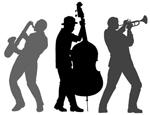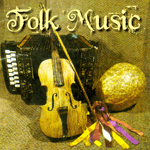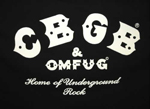Some say the streets of New York have the fast-changing tempo of a jazz improvisation. Others believe it has the desolate, forlorn ring of folk music. It could be. Those busy, noisy streets can be perceived as lively as salsa music or as edgy as the newest indie band. None of those descriptions are incorrect. Ever since New York gained worldwide prominence during the 20th century, there hasn't been a musical genre that hasn't been deeply developed in the intoxicating creative energy of the city that never sleeps.
Choosing one above the other would be a mistake, a denial of the city's amalgamating and accommodating spirit. So here is a small guide to the three key genres which wouldn't exist as they are today without New York City:

The jazz sound arrived as pure as it was played in the South and then got mixed with the syncopated ragtime beats that filled the Harlem bars in the 1900's and the expressionism of the klezmer music that the Jews had made popular on the Lower East Side.
Such an explosive mix prompted the development of new sounds that proved so popular that now sound vintage to our ears: swing, bebop, hard pop, cool jazz... Jazz genius Duke Ellington played a pivotal role in this, as he gathered an army of talented musicians to explore the possibilities of a sound that was theirs and no-one else's.
The names of the all-time jazz greats began to emerge from that scene: Fletcher Henderson, Dizzy Gillespie, Charlie Parker (who invented a chord progression that is now known as New York Blues changes), Thelonious Monk.
Their work prompted the rise of acclaimed performer Miles Davis, whose timeless classics made New York the jazz capital of the world.
It's no coincidence that the title of America's first country music television show --a weekly variety series called Village Barn which aired from 1948 to 1950-- was a reference to a nightclub in The Village, New York. When it became the epicenter of the Beat generation in the 1960's, it also became a hotbed of the American folk music revival that swept the musical scene.

This magical blend of folk sensitivities to the Beat way of life attracted plenty of would-be songwriters to the area, like Bob Dylan, Dave van Ronk, Joan Baez and many others. This generated a rare kind of synergetic atmosphere, in which artists would collectively share their music and their ideas, motivating each other and pushing the boundaries of folk music into the revived sound we know today.
The Village hasn't yet completely shaken its connection with folk music and it is a good idea for aficionados to visit it and get a good, first-hand look at the bars and clubs in which the folk scene went from "popular" to "timeless".

If you like independent (indie) music and are just visiting New York, you are in luck. The most internationally known bands either have historically risen to fame while in the city.
The above description of the folk scene can be considered a canonical example of the many indie genres have developed in the Big Apple: there was the punk movement of 1974 (The Ramones, Blondie or The Talking Heads all emerged from the famous CBGB club that used to be at 315 Bowery at Bleeker Street); there was the New Wave movement (as well as the subsequent No Wave which was an vastly influential as it was local); and then there was the Internet-fueled indie music surge of the 2000's, which saw many New York bands like The Strokes, Grizzly Bear, Vampire Weekend or The Walkmen acquire international fame.